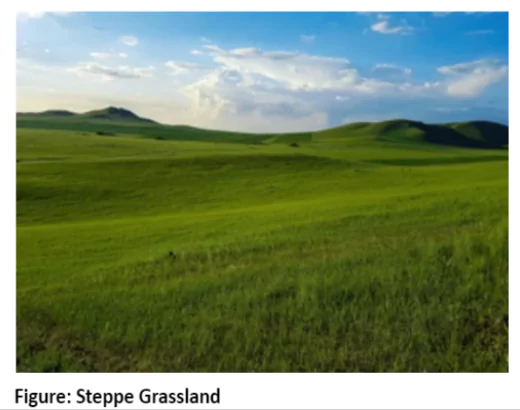![]() May 1, 2024
May 1, 2024
![]() 5650
5650
![]() 0
0
The grasslands in the westerly wind belt, known as Steppe, Prairies, Pampas, and more, experience seasonal variations with warm summers and cold winters. With low rainfall, they promote grass growth, making them ideal for livestock rearing. These regions, famous for extensive wheat cultivation, are often called the ‘granaries of the world‘, supporting nomadic herding and pastoral farming.

 Grasses are not only shorter but also wiry and sparse. In arid areas like Asia’s continental interiors, wiry grasses favour ranching over arable farming.
Grasses are not only shorter but also wiry and sparse. In arid areas like Asia’s continental interiors, wiry grasses favour ranching over arable farming. Ideal Conditions for Animal Farming: Temperate grasslands proved ideal for animal farming. Cattle, sheep, pigs, and horses were introduced, thriving in these conditions.
Ideal Conditions for Animal Farming: Temperate grasslands proved ideal for animal farming. Cattle, sheep, pigs, and horses were introduced, thriving in these conditions.
| Must Read | |
| Current Affairs | Editorial Analysis |
| Upsc Notes | Upsc Blogs |
| NCERT Notes | Free Main Answer Writing |
<div class="new-fform">
</div>
Latest Comments